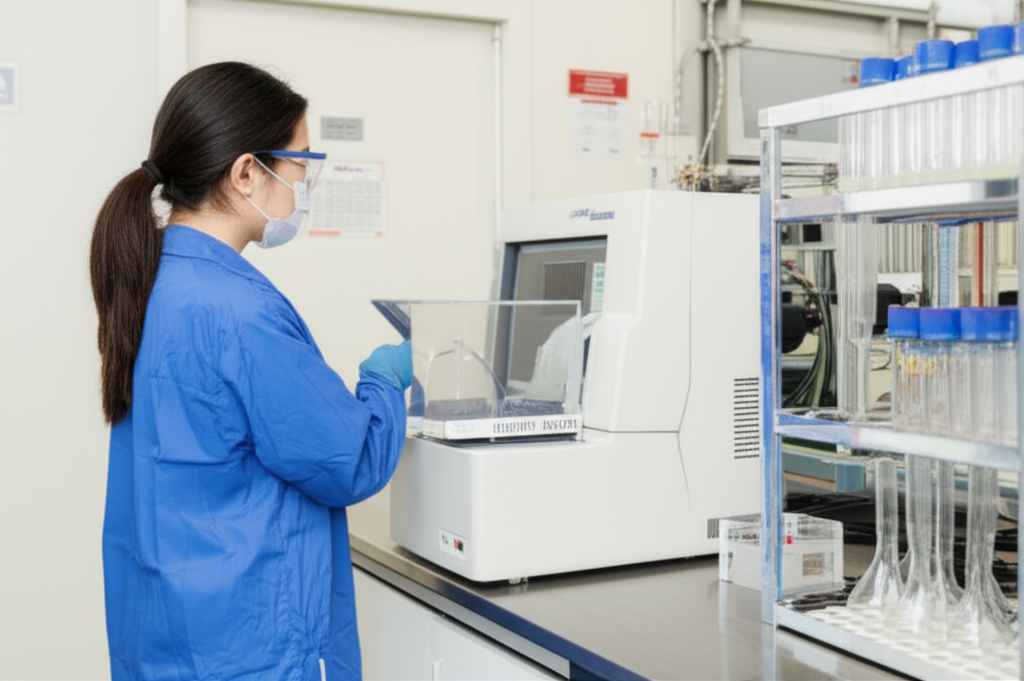In the realm of chemical manufacturing, β-isophorone (β-IP) stands out as a critical intermediate for producing vitamins, carotenoids, and fragrances. Specifically, it is indispensable for synthesizing vitamin E, essential dietary antioxidants, and natural pigments like astaxanthin, widely used in food supplements and health products. Additionally, β-IP serves as a precursor for trimethylhydroquinone (TMHQ), a key component in high-value derivatives. However, traditional methods for synthesizing β-IP from its isomer, α-isophorone, have faced persistent issues such as poor catalyst recovery, low efficiency, high byproduct formation, and environmental harm. Existing techniques, often involving precious metals or harsh alkalis, suffer from cost-intensive processes and generate significant waste, limiting scalability and sustainability in industrial applications.

Previous approaches to β-IP production relied on various catalysts that proved inadequate for broader adoption. Methods using acids or metal-based catalysts resulted in poor conversion rates, excessive side reactions, and severe equipment corrosion. For example, catalysts like alkali carbonates often deplete rapidly, necessitating frequent replacements and creating toxic residues that damage ecosystems. Similarly, solid acids induced high levels of unwanted compounds, reducing purity while escalating disposal costs and carbon footprints. These inefficiencies underscored the urgent need for a cleaner, more efficient alternative that aligns with global green chemistry initiatives without compromising output quality.
A groundbreaking solution is now available through a novel synthesis approach that employs acidic ceramic materials as dual-function catalysts and separation agents in a specialized multi-stage reactor. This innovative process leverages reaction distillation technology to optimize isomerization reactions, where pre-heated α-isophorone is introduced into the reactor at controlled inflows. Operating under mild pressures of 0.1 to 0.5 MPa and temperatures ranging from 180 to 280°C (with an ideal range of 210–250°C), the system ensures continuous reactions. During this progression, β-IP, boiling at just 190°C, vaporizes quickly and separates efficiently from α-IP (boiling at 214°C), collecting at the top as a high-purity distillate. This design utilizes a tower reactor segmented into reaction regions filled with ceramic pellets, enabling simultaneous catalysis and purification to drive equilibrium toward desired outputs.
The superiority of this green synthesis method lies in its multifaceted advantages that revolutionize β-IP manufacturing. One standout benefit is the acidic ceramic material, which boasts exceptional properties including affordability, robust resistance to heat and corrosion, easy reuse via regeneration cycles, and minimal ecological impact. This catalyst simplifies waste management by eliminating heavy metals or toxic residues, cutting chemical consumption by over 50% compared to older systems. Additionally, integrating reaction distillation streamlines operations, allowing for uninterrupted production with enhanced space-time yields above 90%. Experimental trials underpin these gains, achieving β-IP selectivity rates as high as 99.2% at 220°C and 0.15 MPa after two hours of processing. Such outcomes translate to significant cost savings, with lower energy inputs and shorter reaction times boosting overall profitability. Moreover, the closed-loop process minimizes "triple waste" emissions, making it a sustainable innovation poised for global adoption in green chemical plants.
Further validation comes from scalable implementatins that demonstrate the method's commercial readiness. In test configurations, reactors like the one-meter unit loaded with ceramic segments delivered consistent purity levels exceeding 92% even at 180°C and low pressures, with results peaking near full conversion under optimal settings. Long-term stability tests confirm ceramic catalysts endure over 100 cycles without deactivation, reinforcing reusability and lifecycle economics. This synergy of high efficiency and environmental responsibility positions the technique as a cornerstone for industries seeking to produce essential intermediates like β-IP cost-effectively. As demand surges for eco-friendly chemicals in nutraceuticals and cosmetics, this invention paves the way for a cleaner, more productive future in synthetic chemistry, reducing reliance on hazardous methods.
Manufacturing Facilities






Professional Export Experience
to Global Customers

1. 20 years of R&D, manufacturing and sales experience, serving customers in 60 countries and regions around the world;
2. Own R&D laboratory, pilot platform and large-scale production workshop, which can meet the audit requirements of global customers;
3. We can satisfy customers' perfect transition from small scale lab requirements (gram level) to commercialization requirements (hundred tons level).
A: We don't have Minimum Order Quantity, exact quantity should be provided before quotation for us to calculate the exact cost.
A: We don't provide free samples due to lots of request and expensive international courier's cost, we can deduct the sample charge after commercial order placed.
A: Our payment terms: Small or sample order: T/T IN ADVANCE. Commercial order: First order should be by T/T IN ADVANCE or L/C at sight, and following orders T/T 30~90days is acceptable subject to approval of credit application.